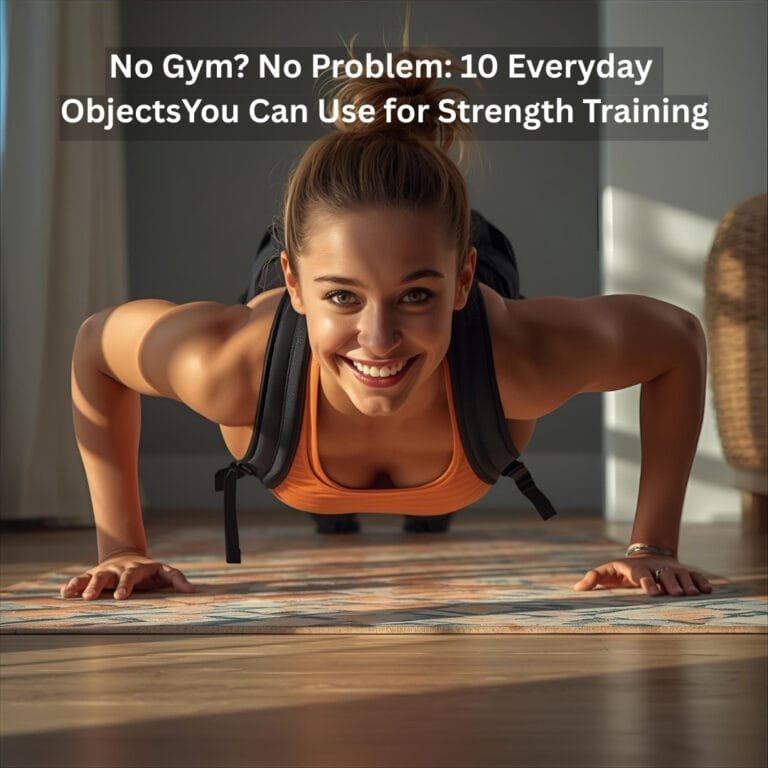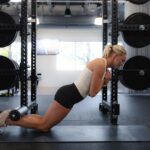Disclosure:
Thank you for reading this post, don't forget to subscribe!
Some of the links on this website are affiliate links. This means that if you click on the link and make a purchase, we may receive a small commission at no extra cost to you. Your support helps us keep the site running.Learn more on my Privacy Policy and Affiliate Disclosure page. Thank you for your support!
Have you ever found yourself too busy for a proper workout? You’re not alone. In our fast-paced world, finding a solid hour for exercise can feel impossible. But what if the solution isn’t carving out more time but instead using the moments you already have? Enter movement snacking—a revolutionary approach to fitness that’s changing how we think about exercise.
Movement snacking involves integrating brief bursts of physical activity throughout your day, rather than relying solely on dedicated workout sessions. These “micro-workouts” might last anywhere from 30 seconds to 5 minutes, but their cumulative impact on your health and fitness can be remarkable.
In this comprehensive guide, we’ll explore how these bite-sized movement opportunities can transform your fitness journey, boost your overall health, and fit seamlessly into even the busiest schedules.
READ NEXT:
What Exactly Is Movement Snacking?
Movement snacking is exactly what it sounds like—”snacking” on small portions of movement throughout your day. Instead of consuming all your exercise in one large “meal” (a traditional workout), you spread it across multiple mini-sessions.
Research published in the Journal of Applied Physiology suggests that frequent movement breaks can counteract many of the negative effects of prolonged sitting—a significant health concern in our modern, sedentary lifestyle. Even brief activity “snacks” can improve blood flow, reduce stiffness, and maintain mobility.
Unlike traditional exercise routines that require changing clothes, commuting to a gym, or setting aside a large block of time, movement snacking requires minimal preparation and can be seamlessly integrated into your existing routine.
The Science Behind Micro-Workouts
Movement snacking isn’t just a convenience hack—it’s backed by solid science. Studies show that accumulating physical activity throughout the day can be just as effective for certain health metrics as continuous exercise sessions.
Dr. Stuart McGill, a renowned spine biomechanist, emphasizes that frequent movement variety is often more beneficial for spine health than prolonged, repetitive exercise. Similarly, research from the University of Utah found that short bursts of high-intensity activity—even just a minute or two at a time—accumulated throughout the day, were associated with lower BMI and reduced risk of obesity.
Perhaps most compelling is evidence from a 2019 study in the British Journal of Sports Medicine showing that breaking up sitting time with brief activity “snacks” improved blood sugar control and insulin levels more effectively than a single 30-minute workout, especially when those movement snacks were spread throughout the day.
The Transformative Benefits of Movement Snacking
1. Enhanced Metabolic Health
Small movement snacks can have a profound impact on your metabolic health. Research from the University of Bath demonstrated that just 2-minute bursts of moderate-intensity exercise performed every 30 minutes significantly improved glucose and insulin responses after meals—a crucial factor in preventing type 2 diabetes and maintaining healthy weight.
2. Improved Cognitive Function and Mood
Movement breaks aren’t just good for your body—they’re excellent for your brain too. Studies show that brief physical activity can:
- Boost creative thinking and problem-solving abilities
- Improve concentration and mental alertness
- Enhance mood and reduce stress levels
- Increase production of BDNF (brain-derived neurotrophic factor), a protein essential for brain health
In fact, a 2018 study in the journal Neuropsychologia found that just 10 minutes of moderate physical activity immediately boosted cognitive performance and brain function.
3. Increased Daily Energy Expenditure
While each individual movement snack might seem insignificant, they add up over time. The concept of Non-Exercise Activity Thermogenesis (NEAT)—the energy we expend during all activities that aren’t eating, sleeping, or formal exercise—plays a huge role in our overall calorie expenditure and weight management.
By incorporating movement snacks, you’re boosting your NEAT, which can:
- Increase daily calorie burn without structured exercise
- Improve metabolic flexibility
- Support weight management goals
- Reduce the health risks associated with sedentary behavior
4. Better Joint Health and Mobility
Our bodies thrive on movement variety. Brief, diverse movement snacks throughout the day can:
- Reduce joint stiffness
- Improve range of motion
- Enhance circulation to joint structures
- Prevent repetitive strain that can come from longer, monotonous exercise sessions
According to physical therapist Kelly Starrett, “You’re only as good as your ability to get in and out of positions.” Movement snacking provides regular opportunities to practice and maintain this fundamental mobility.
5. Sustainable Fitness Approach
Perhaps the most significant benefit of movement snacking is its sustainability. By removing barriers like time constraints, special equipment, or dedicated facilities, movement snacking makes daily physical activity accessible to virtually everyone.
This approach:
- Eliminates the “all-or-nothing” mentality that derails many fitness journeys
- Creates consistent habits that are more likely to stick long-term
- Reduces exercise resistance by making movement bite-sized and achievable
- Builds momentum that can lead to more structured exercise for those who desire it
Practical Movement Snacking Strategies to Transform Your Fitness

Now that we understand the power of movement snacking, let’s explore practical ways to incorporate it into your daily routine. The beauty of this approach is its flexibility—you can customize it based on your environment, fitness level, and personal preferences.
1. The Daily Dozen Approach
Fitness expert Dan John popularized the concept of performing 12 repetitions of a fundamental movement pattern each day. Choose one movement for each day of the week:
- Monday: 12 bodyweight squats
- Tuesday: 12 push-ups (modified as needed)
- Wednesday: 12 hip hinges or kettlebell swings
- Thursday: 12 pull-ups or rowing movements
- Friday: 12 Turkish get-ups or getting up from the floor
- Saturday: 12 loaded carries (walking with weights)
- Sunday: 12 minutes of mindful movement or walking
You can perform all 12 reps at once or break them up throughout the day—3 squats four times daily, for example.
Check out our post on The Power Of Micro-Habits: Small Changes For Big Wellness Gains for mor wellness tips.
2. The “Trigger Method” for Building Movement Habits
Associate specific movements with activities you already do throughout your day:
- Before checking email: 5 desk push-ups
- While waiting for coffee to brew: 10 calf raises
- After using the restroom: 5 deep squat holds
- During phone calls: Standing and walking
- While brushing teeth: Single-leg balance practice
- During TV commercials: Mobility flows or jumping jacks
By attaching movement to existing habits, you’ll find yourself naturally accumulating significant activity without having to remember or plan.
3. The “Movement Snack Menu” Strategy
Create a personalized menu of movement snacks that you enjoy and that fit your fitness level. Keep it varied with options for:
Quick Energizers (30-60 seconds):
- 10 jumping jacks
- 30-second plank hold
- 10 air punches and 10 kicks
- 5 burpees
- 20 mountain climbers
Strength Boosters (1-2 minutes):
- 10 push-ups (wall, knee, or full)
- 15 bodyweight squats
- 10 reverse lunges per leg
- 10 tricep dips using a chair
- 10 glute bridges
Mobility Enhancers (2-3 minutes):
- Hip flexor stretch sequence
- Shoulder mobility routine
- Ankle mobility exercises
- Thoracic spine rotations
- Neck tension relievers
Keep your menu somewhere visible and aim to select 6-10 different options throughout your day.
4. The “Movement Snack Timer” Technique
Use time blocks to structure your movement snacking:
- Set a timer to go off every 45-60 minutes
- When it rings, perform 1-3 minutes of movement of your choice
- Return to your previous activity
This approach is especially effective for people who spend long periods seated at a desk. Apps like “Stand Up!” or “Move” can help by sending reminders throughout your day.
5. The “Movement Greasing” Practice
Fitness coach Pavel Tsatsouline popularized the concept of “greasing the groove”—practicing a movement frequently throughout the day at submaximal effort to build strength and skill.
Choose one movement you’d like to improve (push-ups, squats, pull-ups) and:
- Perform multiple sets throughout the day at 40-60% of your maximum effort
- Keep each set feeling easy—the goal is frequency, not fatigue
- Rest completely between sets (typically hours apart)
This approach is particularly effective for building strength in specific movements without creating significant fatigue.
Read our blog post on The Best 20-Minute Workouts For Busy Professionals In this guide, we’ll explore the best 20-minute workouts designed specifically for professionals who need efficient, high-impact exercise routines.
Overcoming Common Movement Snacking Obstacles
Even with something as simple as movement snacking, challenges can arise. Here’s how to overcome the most common obstacles:
“I’m too self-conscious to exercise in public/at work”
Solution: Choose subtle movements that don’t attract attention:
- Isometric holds like subtle wall sits or discreet glute contractions
- Chair-based movements that look like stretching
- Take brief “water break” walks
- Use private spaces like stairwells or restrooms for quick movement sessions
“I forget to do my movement snacks”
Solution: Leverage technology and environmental cues:
- Set periodic reminders on your phone or smartwatch
- Place visual cues (like a small exercise band or stress ball) on your desk
- Create “movement stations” around your home or office
- Use habit stacking by attaching movement to things you already do consistently
“I don’t know if I’m doing enough”
Solution: Track your progress with simple methods:
- Keep a tally on a sticky note or in a note-taking app
- Use a fitness tracker to monitor step count and active minutes
- Set a daily minimum target (like 5 movement snacks)
- Remember that consistency matters more than perfection
“I don’t have the energy for extra movement”
Solution: Start incredibly small and build gradually:
- Begin with just 10-15 seconds of gentle movement
- Focus on energizing movements like gentle stretching or joint rotations
- Prioritize movement snacks during your natural energy peaks
- Remember that movement often creates energy rather than depleting it
Real-Life Success Stories: Movement Snacking in Action
Sarah, 42, Marketing Executive “As a busy executive and mom of two, finding time for the gym was impossible. I started with just five squats every time I used the restroom at work—something so simple I couldn’t talk myself out of it. Six months later, I’ve built up to 10-15 different movement snacks throughout my day. I’ve lost 18 pounds, my energy has skyrocketed, and my chronic back pain has virtually disappeared.”
Michael, 58, Software Developer “After my doctor warned me about my sedentary lifestyle, I installed an app that reminded me to move every hour. I started with simple desk stretches, then added quick sets of push-ups and squats. Within three months, my blood pressure dropped from concerning to normal range, and I no longer need the afternoon coffee to stay alert. The best part? I haven’t set foot in a gym.”
Taylor, 36, Teacher “Standing all day teaching was taking a toll on my body in a different way—I was static rather than sedentary. I started doing micro-movement breaks with my students—30 seconds of activity between subjects. Not only has my own fitness improved, but classroom focus and behavior have transformed. The kids love our movement snacks as much as I do!”
Integrating Movement Snacking with Traditional Exercise
Movement snacking isn’t meant to replace all structured exercise—rather, it complements it perfectly. Here’s how to blend both approaches for optimal fitness:
- Use movement snacking on your “rest days” to maintain activity without stress
- Implement micro-movements for problematic body areas that need extra attention
- Use movement snacks as warm-ups for your dedicated workout sessions
- When you miss a planned workout, substitute movement snacking rather than doing nothing
- Focus movement snacks on mobility and traditional workouts on strength or cardio
Your 7-Day Movement Snacking Challenge

Ready to transform your fitness with movement snacking? Here’s a simple 7-day challenge to get started:
Day 1: Awareness Simply notice how long you go without moving. Set a timer and be mindful of your sedentary periods without making changes yet.
Day 2: Establish Your First Trigger Choose one daily trigger (like checking your phone) and attach 5 reps of a simple movement to it.
Day 3: Create Your Personal Movement Menu List 6-10 movement snacks you enjoy and could realistically perform in your daily environments.
Day 4: Implement the Timer Technique Set a reminder for every 60 minutes and perform one movement snack when it sounds.
Day 5: Double Your Triggers Add a second habit trigger to incorporate another consistent movement opportunity.
Day 6: Increase Duration or Intensity Take one of your established movement snacks and slightly increase its challenge or duration.
Day 7: Reflect and Plan Review what worked well and what challenged you. Create a sustainable plan for continuing your movement snacking practice.
Trusted Network Suggestions For Further Reading
- Link to a research study about breaking up sedentary time, such as research from the British Journal of Sports Medicine: https://bjsm.bmj.com/
- Link to the American Heart Association’s recommendations about reducing sedentary behavior: https://www.heart.org/
RECENT POST:
Conclusion: The Powerful Impact of Small Changes
Movement snacking perfectly embodies the philosophy that small, consistent actions lead to remarkable results. By embracing this approach, you’re not just transforming your fitness—you’re revolutionizing your relationship with movement itself.
Rather than seeing exercise as something that requires special time, places, or equipment, movement snacking reveals the truth: our bodies were designed to move throughout the day in varied, functional ways. By reclaiming these natural movement opportunities, you’re not just getting fitter—you’re returning to a more natural human movement pattern.
Start small, be consistent, and watch as these tiny movement moments accumulate into significant health benefits, improved energy, and a stronger, more capable body—all without adding a single gym session to your calendar.
Ready to transform your fitness with movement snacking? Start with just one movement trigger today, and share your experience in the comments below. Your movement journey begins with a single “snack”!
MORE ABOUT:
HEALTH / WELLNESS / FITNESS / NUTRITION
SHARE THIS ARTICLE

















